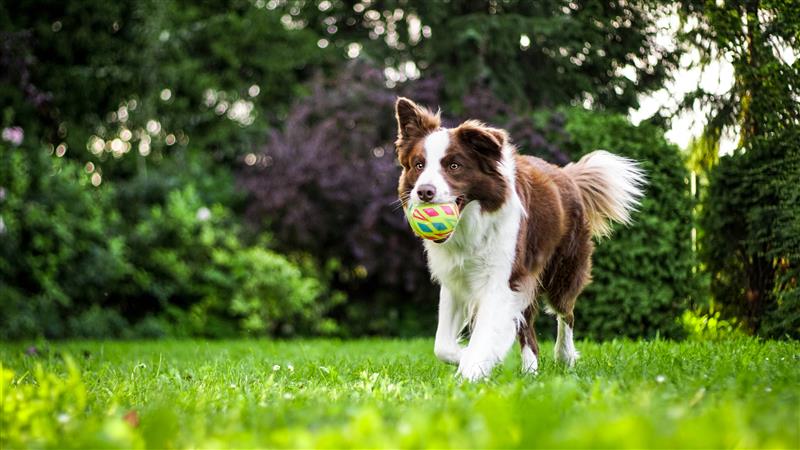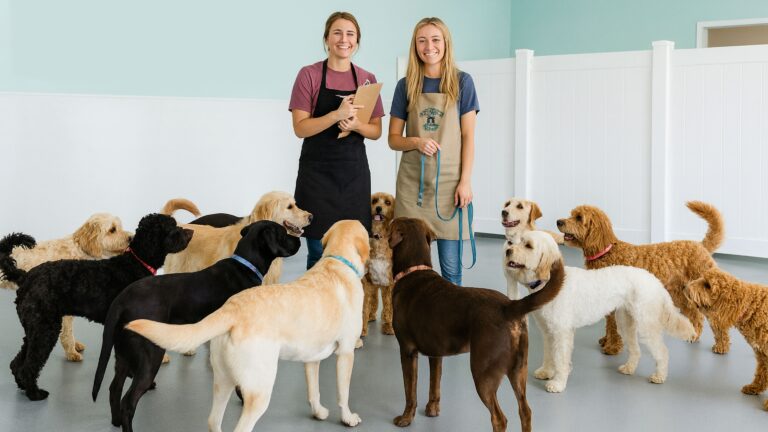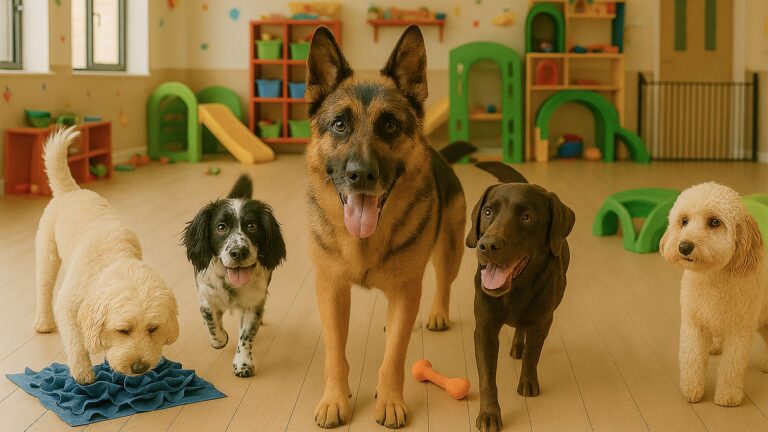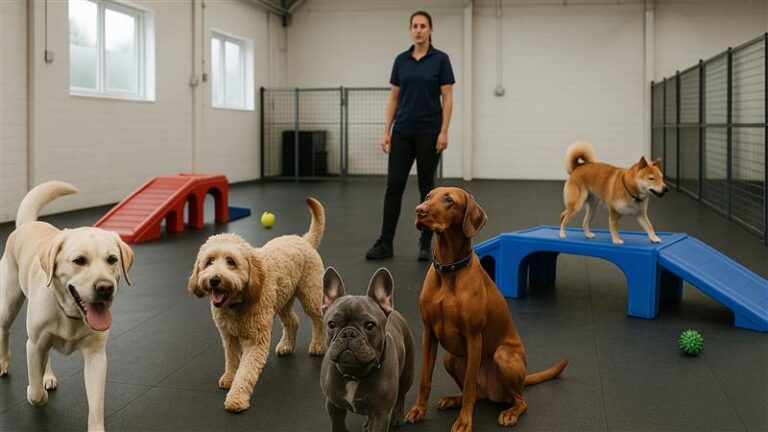Dogs need more than walks and meals. They need something to think about. When a dog’s day is made up of nothing but physical exercise and waiting around, frustration tends to creep in. That is when chewing, barking or restless behaviour often starts.
Mental enrichment gives dogs purpose through small challenges, choice and discovery. It helps channel their energy in a way that leaves them calmer, more confident and far easier to live with.
Why Mental Enrichment Really Matters
Dogs are intelligent and curious by nature. When that curiosity has nowhere to go, it often turns into anxiety or destructive habits. Dogs left to their own devices for long periods will usually find their own entertainment and it is rarely the kind we want.
Enrichment gives dogs a healthy outlet for their instincts. Activities that encourage sniffing, searching and problem-solving help dogs use their brains rather than bouncing it out through over-excitement. Over time, this leads to better focus, improved behaviour and a dog that settles more easily at home.
Seven Mental Enrichment Ideas That Genuinely Work
1. Scent and Nose-Work Games
Hide small treats hidden away indoors or out in the garden and encourage your dog to find them using their nose. This taps into natural scenting instincts and keeps dogs focused for longer than most physical games. Nose work builds patience and confidence and leaves dogs feeling satisfied rather than wired.
2. Puzzle Feeders for Everyday Meals
Swap the food bowl for a puzzle feeder or food-dispensing toy. Mealtimes slow down and become a problem-solving exercise instead of a quick gulp. It is one of the easiest ways to add mental enrichment to a daily routine without extra effort.
3. Simple Obstacle Courses at Home
Use cushions, chairs or broomsticks to create a basic course. Encourage your dog to step over, crawl under or weave through. This improves coordination and confidence while giving dogs a clear task to focus on rather than excess energy to burn off.
4. Teaching New Tricks
Introducing one small trick each week keeps dogs mentally alert. It is also a great way to strengthen your bond and improve communication. Many dogs enjoy short, focused training sessions far more than long, overstimulating play.
5. Sniffarisand Decompression Walks
Walks are not just about distance. Swap your usual route for something new and allow your dog time to nose around properly. A Sniffari, where sniffing is encouraged rather than rushed, gives dogs valuable mental release and often results in a much calmer dog at home.
6. Rotating Toys
Keep only a few toys out at a time and rotate them weekly. Old toys feel new again, which naturally reignites curiosity without buying anything extra. This simple change keeps dogs engaged and reduces boredom.
7. Calm Enrichment for Winding Down
Not all enrichment needs to be active. Gentle massage, soft background music or a simple sniff box filled with safe textures can help dogs learn how to relax. This is especially useful for dogs who struggle to switch off and stay highly alert throughout the day.
A Simple Daily Enrichment Routine
Time | Activity | Why it helps |
Morning | Puzzle feeder breakfast | Engages the brain and sets a calm tone |
Midday | Scent hunt | Uses natural instincts and reduces restlessness |
Afternoon | Sniffari or new walking route | Adds variety and mental stimulation |
Evening | Short trick session | Builds focus and strengthens bonding |
Night | Calm sniff box or massage | Encourages relaxation and better sleep |
A Real-Life Example: Luna the Labrador
Luna, a young Labrador, used to chew furniture whenever she was left alone. Her owner introduced daily scent games and began rotating toys weekly. Within two weeks, the chewing stopped. Luna became calmer, more patient and noticeably easier to train.
Nothing dramatic changed. She was simply given more to think about.
Tips for Getting Dtarted (and Mistakes to Avoid)
Start small and gradually increase difficulty so your dog does not feel overwhelmed.
Watch your dog closely. If frustration appears, simplify the activity.
Always supervise new toys to avoid choking risks.
Reward effort with praise or treats to keep motivation high.
Repeat favourite activities regularly to reinforce positive behaviour.
Why Mental Enrichment Leads to a Happier Life
Mental enrichment is not a luxury. It is a core part of responsible dog care. Dogs thrive when they are given opportunities to think, explore and solve problems. Enrichment reduces stress, curbs destructive behaviour and supports long-term wellbeing.
It also strengthens the bond between you and your dog, creating a calmer and more balanced household.
The RSPCA consistently highlights mental stimulation as essential to a healthy canine life.
Managing Enrichment More Easily with Pawpal
For dog care providers, keeping track of enrichment routines, preferences and progress can be time-consuming. Pawpal helps organise daily schedules, record activities and support consistent care across dogs.
If you want a clearer way to manage enrichment while improving each dog’s wellbeing, Pawpal makes it simpler.




